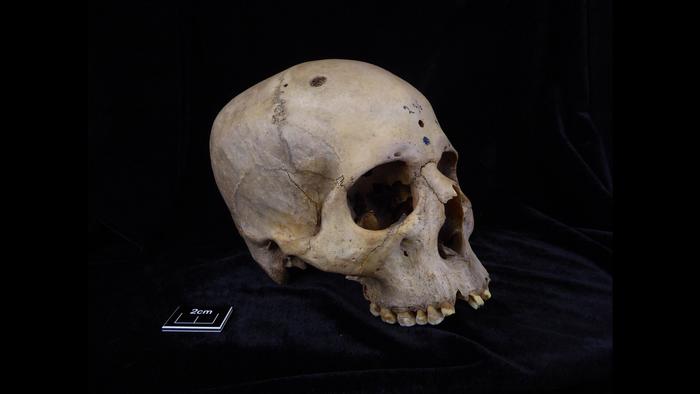Knees up! Computational modeling could improve knee implant alignment
A Texas A&M University doctoral student has collaborated with an innovative surgical navigation and robotics company on motion capture research that can potentially improve implant alignment during knee replacement surgeries. Credit: Texas A&M Engineering Communications A Texas A&M University doctoral student has collaborated with an innovative surgical navigation and robotics company on motion capture research […]

A Texas A&M University doctoral student has collaborated with an innovative surgical navigation and robotics company on motion capture research that can potentially improve implant alignment during knee replacement surgeries.

Credit: Texas A&M Engineering Communications
A Texas A&M University doctoral student has collaborated with an innovative surgical navigation and robotics company on motion capture research that can potentially improve implant alignment during knee replacement surgeries.
Aaron Henry is a fourth-year Ph.D. student in the Doctor of Philosophy in Interdisciplinary Engineering program in the Department of Multidisciplinary Engineering. He worked with Caira Surgical, a surgical navigation and robotic orthopedic surgery company that focuses on simplifying workflows and developing technological systems to assist with joint replacement. Henry’s research focused on validating Caira’s proprietary computational knee model that can help surgeons better position implants during knee replacement surgeries.
Over 1 million total knee replacements, or TKRs, were performed in 2020 in the U.S. Twenty percent of patients reported dissatisfaction with the results, ranging from poor implant alignment to poor biomechanics.
During previous preoperative planning sessions, surgeons tried to estimate the correct location based on their diagnosis of the ligament strain before placing the implant. However, this method was not completely adequate since patients sometimes experienced issues that require revisions through additional surgery.
Instead of positioning the implant purely based on experience or eyesight, doctors can now use computational modeling to review the orientation of an implant for optimal accuracy and assess any potential misalignment before final placement. They can also run simulations to show how the implant will interact with the patient’s anatomy and predict specifics of post-surgery knee motion and any possible significant changes in mobility.
The initial validation of this modeling involved creating a physical 3D-printed knee model, which Henry compared to the computational model using motion capture. The comparison showed that the computational model reasonably predicted the performance of the physical model in the real world.
Henry recently presented his research paper, “Experimental Validation of a Computational Knee Model of TKR Implant Placement,” at this year’s Design of Medical Devices Conferences at the University of Minnesota in Minneapolis from April 17-19.
This research was published in the American Society of Mechanical Engineering (ASME) Digital Collection.
Dr. Andrew Robbins, research assistant professor in the School of Engineering Medicine and the Department of Multidisciplinary Engineering at Texas A&M, is one of Henry’s advisors. “This work with our partners at Caira provides an opportunity to impact a huge number of Americans who need joint replacements,” he said. “Aaron’s work is laying important groundwork for significant improvements to clinical practice in the near future.”
In addition to Robbins, two members of Caira Surgical worked with Henry on the paper: Gordon Goodchild, vice president of research and development, and Jon Greenwald, co-founder and CEO. Other contributors include Dr. Morteza Meftah, an orthopedic surgeon at New York University Langone Health, and Dr. Michael Moreno, Henry’s second advisor and associate professor in the J. Mike Walker ’66 Department of Mechanical Engineering at Texas A&M.
By Grace Dalton, Texas A&M Engineering
DOI
10.1115/DMD2023-5598
Article Title
Experimental Validation Of A Computational Knee Model Of TKR Implant Placement
Article Publication Date
4-Jun-2023
What's Your Reaction?

































